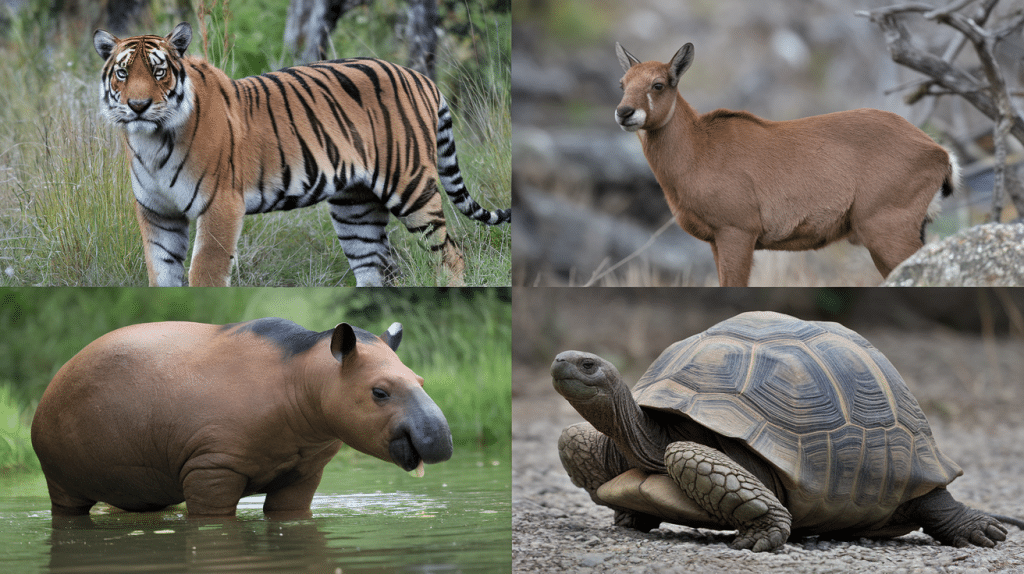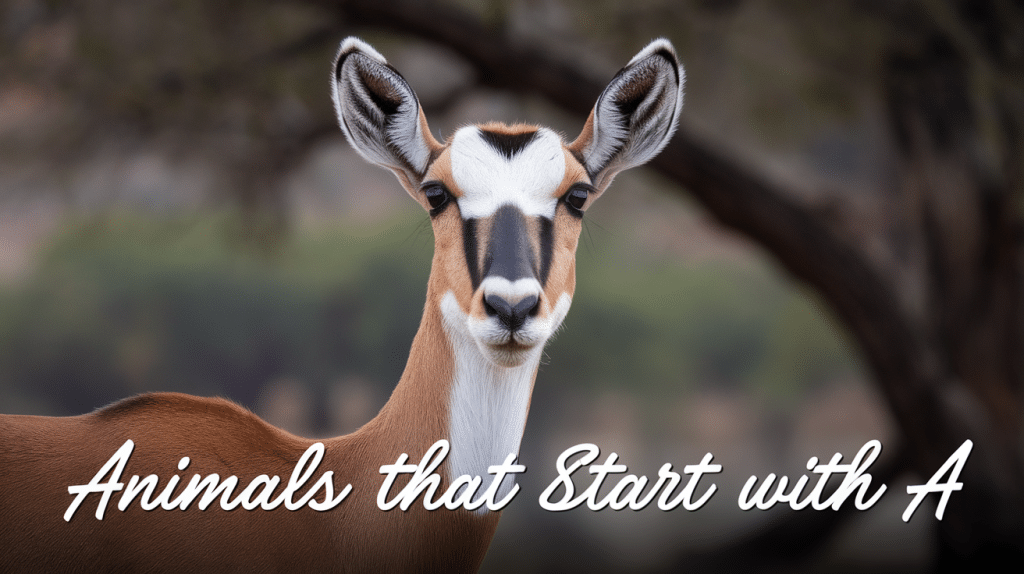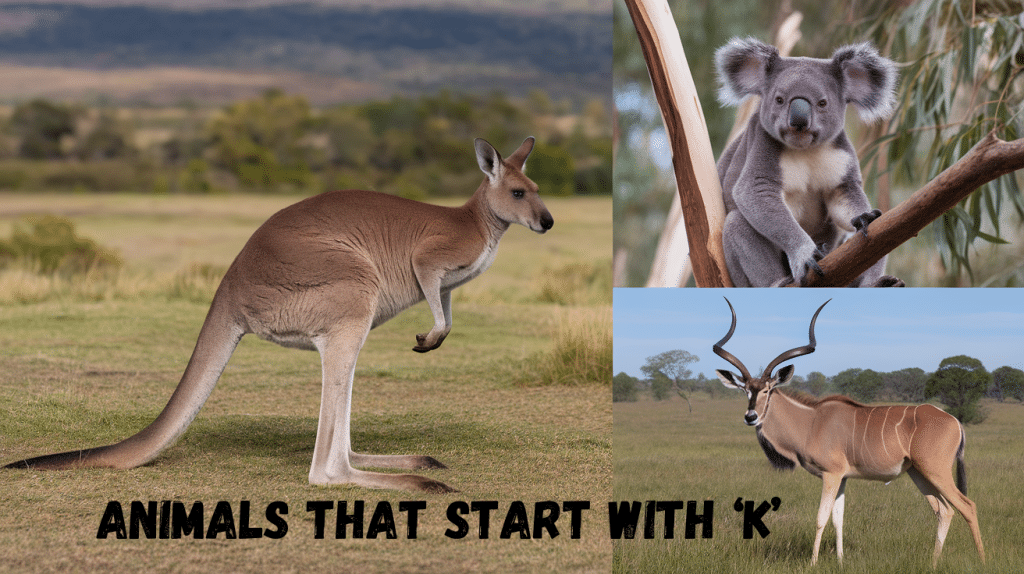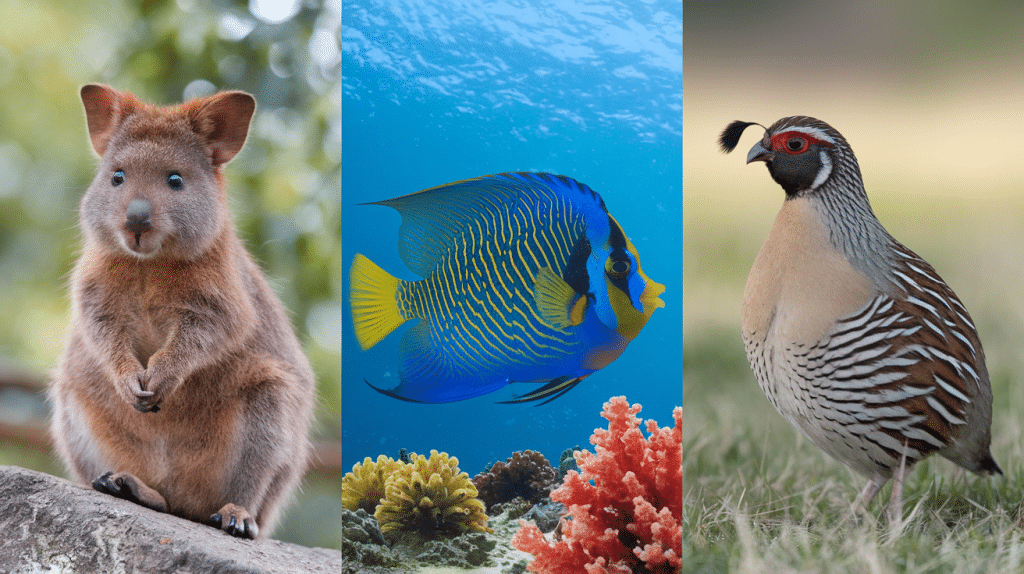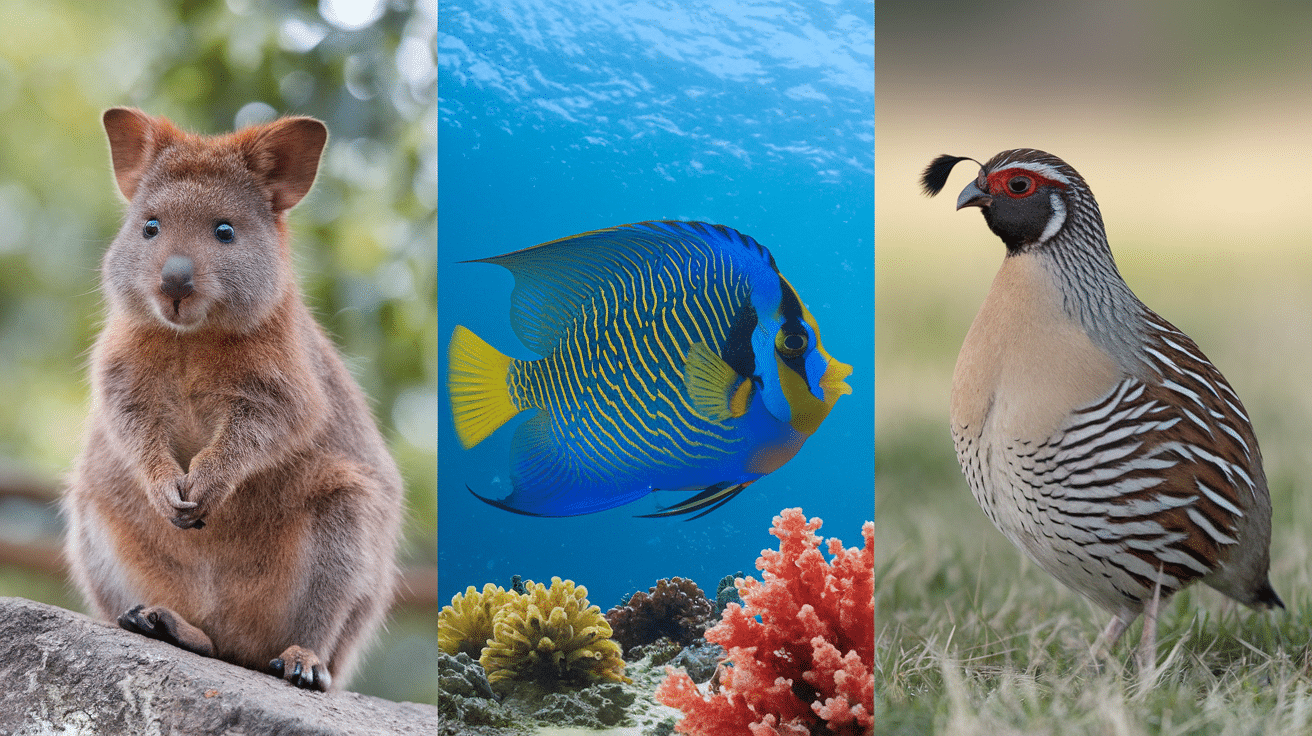Now Reading: 50 Animals that Start with Z: List and Fun Facts
-
01
50 Animals that Start with Z: List and Fun Facts

50 Animals that Start with Z: List and Fun Facts
How often do you come across animals that begin with the letter Z?
Probably not that often! The letter Z sits at the end of the alphabet and, similarly, Z-named animals can seem like the underdogs of the animal kingdom – rarely mentioned but no less interesting.
Parents helping with homework, trivia game players, and anyone curious about wildlife beyond the usual suspects will find this list of Z animals helpful.
From the striped zebra that most people know to the lesser-known zorilla (yes, that’s a real animal!), we’ll look at creatures from around the world whose names begin with this uncommon letter.
Some of these animals might surprise you with their unusual looks, behaviors, or habitats. Ready to meet some remarkable members of the animal kingdom?
Popular Animals Starting With Z
1. Zebra

Zebras are iconic for their striped coats, which are believed to help them camouflage in grasslands. They are strong social animals, often found in herds, and communicate through vocalizations and body language.
Origin: Africa
Habitat: Grasslands and savannas
Scientific Name: Equus zebra
Fun Facts:
- Each zebra’s stripes are unique, like human fingerprints.
- Zebras can run up to 65 km/h to escape predators.
2. Zebu

Zebus are unique due to their large, hump-like structure, which stores fat. These sturdy animals have adapted well to harsh environments and are crucial to agricultural economies in their native regions.
Origin: India
Habitat: Arid and semi-arid regions
Scientific Name: Bos indicus
Fun Facts:
- Zebus are often used for milk and labor.
- They have a unique resistance to certain diseases like tick-borne fever.
3. Zorilla

Zorillas, resembling skunks, use their potent scent glands to defend themselves from threats. Despite their size, they are fierce and fast, often hunting small mammals and birds in the wild.
Origin: Sub-Saharan Africa
Habitat: Woodlands, savannas, and grasslands
Scientific Name: Ictonyx striatus
Fun Facts:
- Zorillas can spray a foul-smelling liquid to ward off predators.
- They are nocturnal and live in burrows.
4. Zander

Zander are predatory fish that thrive in freshwater ecosystems. Known for their sharp teeth and quick reflexes, they are often sought after by anglers due to their challenging catch.
Origin: Europe and Asia
Habitat: Freshwater lakes and rivers
Scientific Name: Sander lucioperca
Fun Facts:
- Zander can grow over a meter long.
- It has sharp teeth and is known for being a stealthy predator.
5. Zebra Finch

Zebra finches are social birds that live in large colonies. They are famous for their energetic songs and are often used in research about communication and learning. Their simple yet vivid coloration makes them a popular pet.
Origin: Australia
Habitat: Grasslands and open woodlands
Scientific Name: Taeniopygia guttata
Fun Facts:
- Zebra finches are excellent mimics of sounds they hear.
- They form strong pair bonds and often sing to attract mates.
6. Zonkey

Zonkeys are hybrids between a zebra and a donkey, inheriting traits from both species. With their distinctive stripes and donkey-like features, they are sterile, making them a rare and fascinating crossbreed.
Origin: Crossbreed (Zebra + Donkey)
Habitat: Generally in captivity or farms
Scientific Name: Equus asinus × Equus zebra
Fun Facts:
- Zonkeys inherit characteristics from both parents, including the stripes of the zebra.
- They are sterile due to their hybrid nature.
7. Zokor

Zokors are burrowing rodents with large front teeth that help them dig through the earth. They are solitary and spend most of their time underground, rarely emerging to the surface.
Origin: Asia
Habitat: Underground tunnels in forests and grasslands
Scientific Name: Myospalax
Fun Facts:
- Zokors rarely come out of their burrows, avoiding predators.
- Their large front teeth help them dig through tough soil.
8. Zorse

Zorses are another zebra hybrid, born from crossing a zebra with a horse. Known for their unique striped coat, they combine the strength of a horse with the wildness of a zebra.
Origin: Crossbreed (Zebra + Horse)
Habitat: Usually kept in captivity or farms
Scientific Name: Equus ferus caballus × Equus zebra
Fun Facts:
- Zorses inherit the zebra’s stripes and the horse’s strength.
- Like other hybrids, zorses are sterile.
9. Zebrafish

Zebrafish are small but fast-moving fish found in rivers and streams. Due to their clear embryos and rapid development, they are extensively used in biological research, especially in the study of genetics.
Origin: South Asia
Habitat: Freshwater rivers and streams
Scientific Name: Danio rerio
Fun Facts:
- Zebrafish are commonly used in genetic research due to their transparent embryos.
- They can regenerate lost body parts like fins and hearts.
10. Zenaida Dove

The Zenaida dove is known for its gentle cooing and calming presence. It is a peaceful bird found in tropical areas, often seen foraging for seeds and grains in the wild.
Origin: Caribbean and Central America
Habitat: Coastal and forested areas
Scientific Name: Zenaida aurita
Fun Facts:
- Zenaida doves are commonly found in urban areas.
- They are non-migratory and usually stay in their habitats year-round.
11. Zorro

Zorros are wild canids found in South America. Known for their agility, they are primarily nocturnal hunters, relying on their keen senses to track prey across various terrains, from forests to grasslands.
Origin: South America
Habitat: Grasslands, forests, and woodlands
Scientific Name: Lycalopex
Fun Facts:
- Zorros are skilled at hunting small mammals and birds.
- Their bushy tail helps them balance while running through rough terrain.
12. Zebra Shark

The zebra shark is a species of carpet shark with distinctive black and white stripes, usually found in shallow waters. Despite their name, they are more closely related to the rays than typical sharks.
Origin: Indo-Pacific
Habitat: Coral reefs and sandy bottoms
Scientific Name: Stegostoma fasciatum
Fun Facts:
- Zebra sharks are bottom-dwellers and feed on small invertebrates.
- They can grow up to 3 meters long and are non-aggressive to humans.
13. Zanzibar Leopard

The Zanzibar leopard is a rare and endangered subspecies of leopard found exclusively on the island of Zanzibar. These leopards are solitary and elusive, often living in dense forests and jungles.
Origin: Zanzibar, Tanzania
Habitat: Rainforests and coastal woodlands
Scientific Name: Panthera pardus adersus
Fun Facts:
- The Zanzibar leopard is critically endangered due to habitat loss and poaching.
- It has distinctive dark spots that help it blend into its environment.
14. Zorro Cangrejo

Zorro Cangrejo, also known as the crab-eating fox, is a medium-sized canid native to South America. It primarily forages for crabs, small mammals, and other animals in wetlands and coastal areas.
Origin: South America
Habitat: Coastal regions, wetlands, and savannas
Scientific Name: Cerdocyon thous
Fun Facts:
- Zorro Cangrejo feeds on a variety of animals, including crabs, birds, and reptiles.
- It has excellent digging abilities to uncover hidden prey in the sand.
15. Zucchini Worm

The zucchini worm is a type of larval insect that feeds on the leaves and stems of zucchini plants. Despite being a pest, they play an important role in decomposing plant matter.
Origin: North America
Habitat: Gardens, especially where zucchini is grown
Scientific Name: Spodoptera frugiperda
Fun Facts:
- The zucchini worm can cause significant damage to crops.
- It is known for its rapid growth and ability to reproduce quickly.
16. Zebra Duiker

The Zebra Duiker is a small, elusive antelope found in the dense forests of West Africa. Known for its striking black-and-white striped markings, it is primarily herbivorous and avoids predators by staying hidden in thick vegetation.
Origin: West Africa
Habitat: Dense rainforests
Scientific Name: Cephalophus zebra
Fun Facts:
- Zebra duikers are solitary animals that prefer to stay out of sight.
- They are excellent at camouflaging in their forest environment, making them hard to spot.
17. Zigzag Heron

The Zigzag Heron is a small, secretive bird that inhabits the tropical forests of South America. It gets its name from its distinctive hunting behavior, often zigzagging along the edges of streams in search of fish and insects.
Origin: South America
Habitat: Tropical forests near rivers and streams
Scientific Name: Zebrilus undulatus
Fun Facts:
- The zigzag heron is an expert at moving silently through dense underbrush.
- Its diet primarily consists of fish, amphibians, and insects found near water.
18. Zhou’s Box Turtle

Zhou’s Box Turtle is a rare and highly endangered species of turtle native to China. These turtles are known for their unique ability to close their shells completely for protection, making them one of the most resilient reptiles.
Origin: China
Habitat: Forests and wetlands
Scientific Name: Cuora zhoui
Fun Facts:
- Zhou’s box turtle is critically endangered, primarily due to habitat loss and illegal trade.
- They are slow-moving and rely on their shell to protect them from predators.
19. Zapata Sparrow

The Zapata Sparrow is a critically endangered bird endemic to the Zapata Swamp in Cuba. This small songbird is known for its vibrant plumage and distinctive call, although it is rarely seen due to its limited range.
Origin: Cuba
Habitat: Swamps and marshlands
Scientific Name: Torreornis inexpectata
Fun Facts:
- The Zapata sparrow’s population is extremely small, making it one of the rarest birds.
- It has adapted to live in dense swamp vegetation, making it difficult to spot.
20. Zanzibar Red Colobus

The Zanzibar Red Colobus is a unique primate found only on the island of Zanzibar. It is known for its striking red fur and is considered one of the rarest primates in the world, living primarily in the forests of Zanzibar.
Origin: Zanzibar, Tanzania
Habitat: Coastal forests and woodlands
Scientific Name: Piliocolobus kirkii
Fun Facts:
- The Zanzibar red colobus is critically endangered due to habitat destruction and hunting.
- It has a highly specialized diet, feeding primarily on leaves and fruits from specific trees.
Rare Animals Starting With Z
- Zokor Rat
- Zebra Mussel
- Zebra Tarantula
- Zamora’s Toad
- Zebra Swallowtail
- Zalophus
- Zebrafish Shark
- Zinnia Moth
- Zygaenid Moth
- Zebra Dove
- Zigzag Salamander
- Zygoptera
- Zemaitis Horse
- Zebra Leafhopper
- Zancloid Fish
- Zaire Sable Antelope
- Zostera Fish
- Zebra Grouper
- Zayante Band-winged Grasshopper
- Zebra Cichlid
- Zygnematophyceae
- Ziziphus Butterfly
- Zambian Kudu
- Zambian White Antelope
- Zoraptera
- Zebra-Crested Cockatoo
- Zorilla Bats
- Zanzibar Spotted Gecko
- Zella’s Frog
- Zanzibar Golden Tree Frog
A World of Z Animals: Small But Mighty
While the list of animals that start with Z might be shorter than other letters, these creatures certainly make up for it with their unique qualities.
From familiar zebras roaming the African plains to the mysterious zokor burrowing underground, Z animals show us just how varied wildlife can be.
Each has found its own special place in nature’s big story.Next time you spot a zebra at the zoo or read about a zorilla, you’ll have some interesting facts to share with friends and family.
These lesser-known animals remind us that there’s always something new to learn about our natural world.
The letter Z may come last in the alphabet, but these animals certainly aren’t last when it comes to being interesting. They prove that sometimes the most intriguing things come at the end of a list!















